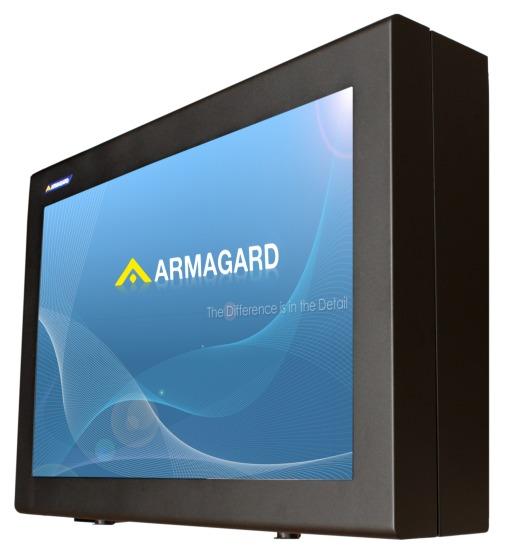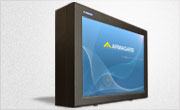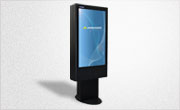Waterproof TVs – Cost and Effectiveness
Posted by: Richard Williams | Posted on: | 1 Comments
Since flat screen TVs first emerged over a decade ago, there use has become ubiquitous replacing the cathode ray tubes (CRT) which were used for years to provide television entertainment.
Now, modern LCD (liquid crystal display) and plasma screens are found in nearly every front room but their use doesn’t stop there. These flat screen displays are commonly found out of the home and are used for advertising and information – even outdoors.
Outdoor digital signage is growing from of out of home advertising, while information screens are also being deployed outdoors particularly in the transport industry who use them at bus stations and other locations to provide timetable information.
Using screens outdoors is not a straightforward task, however, with a need to protect the screens from the weather and extreme temperature of an outdoor environment.
Outdoor screens are now being produced by several LCD manufacturers. These devices are designed as waterproof TVs for outdoor use and are commonly being deployed as outdoor digital signage and exterior information screens.
Waterproof TVs do come with a price tag that is prohibitive to many smaller businesses and companies and they have other disadvantages too:
While waterproof TVs are built to international and national guidelines such as IP65 and NEMA 4, and this ensures they keep out the weather elements such as rainfall; however, there are other challenges to using outdoor locations which outdoor LCDs are not quite as good at overcoming.
While an outdoor TV has a wider temperature range than a regular commercial or consumer grade screen they can often struggle when the ambient temperature is very extreme. Extremely hot areas and freezing temperatures can be too much for these outdoor devices and can cause them to fail.
Furthermore, as many outdoor screens are left in unmanned locations, the outdoor screens are fairly vulnerable and are ill-equipped to deal with severe impacts such as those caused by vandalism. The consequence of such is that the outdoor screen has to be housed in some sort of protective enclosure. However, many LCD enclosures that offer this physical protection are also weatherproof and contain temperature control components.
As these outdoor LCD enclosures can house standard commercial grade and consumer screens, keep them protected from the weather, temperature and impact they do away with the need for outdoor screen. And as commercial grade screens in combination with an LCD enclosure are far cheaper than outdoor TVs – it is a cost effective alternative as well.
Post shortlink:
Popular Products
LCD Enclosure
Need armor for your LCD/LED screen(s)? Outdoors or inside the versatile LCD enclosure protects against thieves, vandals & the weather. Installation idea: NFL stadiums.
Outdoor Digital Signage
Exclusive 46” outdoor screen protection. Dubbed the ‘Totem’, due to its distinct design, it repels damage threats, but attracts audiences. Installation idea: Drive-thru restaurants.
Portrait Flat Panel Enclosure
Safeguard your eye-level advertising display screen(s), indoors or outdoors. Completely customizable, add exciting features like touch screen technology. Installation idea: Restaurant frontages.
Indoor Digital Signage
Popular purchase for retail outlets! Great for ‘point of sale’ persuasion, boost your brand with static & motion advertising from a single unit! Installation idea: Mall of America.





